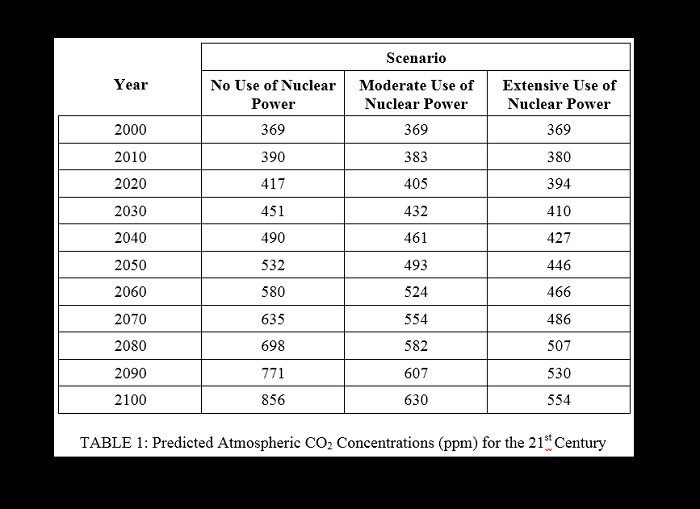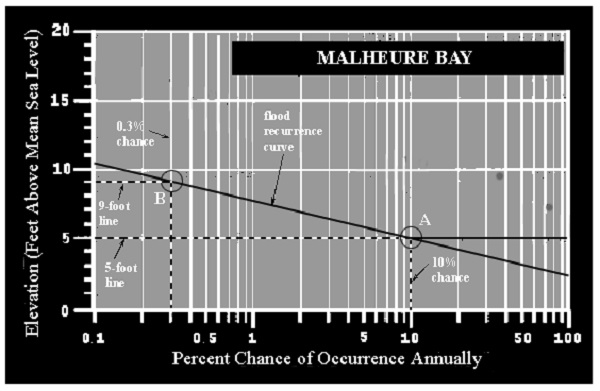EXPLORING THE CONSEQUENCES OF GLOBAL WARMING
The Exercise
Assume that, using the geologic skills that you learned in this course, you discovered a gold mine, became very wealthy, and bought a private island (Happy-Times Island). Despite your good fortune, the consequences of human- induced global warming may adversely affect your future. Answer the following 7 questions. Use the map, data tables, graphs, and explanatory material found after the questions to determine your answers. (Note: The uncertainties in the data have been ignored throughout the exercise.)




1. Assume that there is a worldwide ban on the use of nuclear power (an energy source that emits no CO2). In what year will the ocean start to flood your swimming pool as the result of rising sea level? ___________________________
2. In what year would the ocean start to flood your swimming pool as the result of rising sea level if nuclear power were widely used? ___________________________
3. By how many feet would the island be flooded by rising sea level in the year 2090 assuming that the world used a moderate amount of nuclear power? ___________________________
4. By how many feet would the island be flooded by a storm surge caused by a moderate hurricane (category 2) occurring today? ___________________________
5. Assuming that the world used a moderate amount of nuclear power: how much would it cost you to build a sea wall along the edge of your island that was capable of preventing the flooding of any part of your island through the year 2090? ___________________________
6. How much would it cost you to build a sea wall along the edge of your island that was capable of preventing the flooding due to a storm surge caused by a Category 2 hurricane that occurred today? ___________________________
7. The owner of the house on the island is concerned about his house being damaged by flooding in the event of a storm surge. He applies for an insurance policy to cover potential losses. He wants a policy that will pay him $250,000 dollars if storm surge floodwaters reach the level of his front door sill. His front door sill is 12.1 feet above sea level.

(To learn how to use the Flood Recurrence Graph above, refer to the section "How to Read Flood Recurrence Graphs" below.
(a) Assume the family lives in the house for 70 years. On average, how many times will the insurance company have to pay the family during that period for a flood that reached their door sill? ___________________________
(b) How much total profit will the insurance company gain if they charge the family a yearly fee of $10,714? (Be prepared to explain how you arrived at the figure you recommend.) ___________________________
How to Read Flood Recurrence Graphs
Consider this flood recurrence graph for Malheure Bay. What would be the chance of a 5-foot storm surge flood affecting this site?

First, identify the line that corresponds to a 5-foot flood. Height of sea level is measured along the Y-axis. The 5- foot line is shown as a dashed line pointed to by a black, labeled arrow. Then, identify the point where the flood recurrence curve intersects the 5-foot flood line. The point of intersection ‘A’, is circled. Now, draw a line (shown dashed) parallel to the Y-axis that passes through the circled point. Note where the vertical line meets the X-axis and read the scale. In this case the percent chance occurrence of a flood is 10%. Thus, the graph indicates that there is a 10% chance of a 5-foot flood at Malheure Bay during any given year.
The graph can also be used to determine the expected height of a particular flood. For example, determine the height of the flood that would have a 0.3% chance of occurring in any given year. Draw a vertical line (shown dashed) upwards from the 0.3% point on the ‘% chance of occurrence annually’ axis. Note where it intersects the flood recurrence curve at point B (circled). Now, draw a horizontal line (shown dashed) from the intersection of the curve and the 0.3% line, over to the ‘Elevation’ axis. Read the elevation value. The 0.3% flood would be 9 feet.
A flood with a 4% chance of occurrence annually is also said to have a recurrence interval of 25 years. It is also called a ‘25-year flood’. Why?
Determine how long it would take a flood of 4% chance of occurrence annually to have a 100% chance of taking place. Well, if it has a 4% chance in 1 year, it has an 8% chance of occurring in 2 years, a 12 % chance of occurring in 3 years, etc. So how many years would it take for it to have a 100% chance of occurring? Call that number of years ‘X’. Then:

Because this flood can be expected to occur on average each 25 years, it is called a 25-year flood and its recurrence interval is 25 years.
©David Seidemann and David Leveson - Brooklyn College - Earth and Environmental Sciences